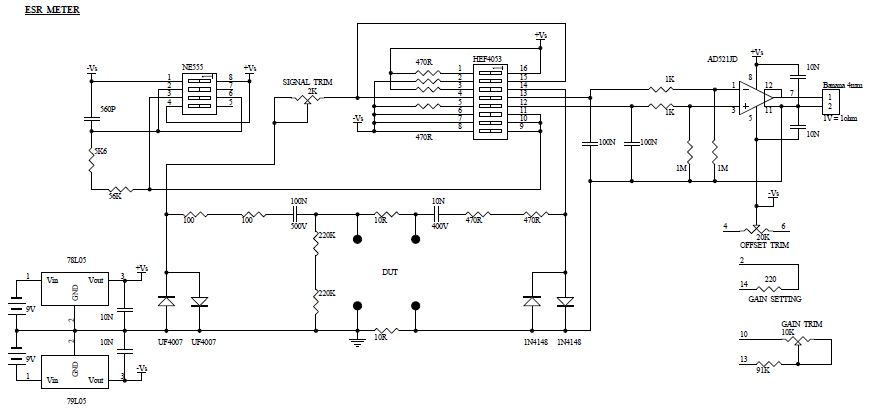Just starting to gather parts and prepare circuitry sections now for a variant of Jay_Diddy_B's ESR meter.
I have plenty of HEF4053BT, so am going to see how this fairs up to 100kHz, given a higher supply rail of 10V to improve switching speed and on-resistance.
I also have a few vintage instrumentation opamps on pcbs, so will re-purpose an AD521 and hopefully achieve 1V/ohm scaling with zero offset, and maybe allow a 10:1 gain switch for higher ESR levels.
Aiming to see if the spare 4053 switch can operate in parallel for the voltage signal switch, to minimise the switch resistance a bit more (and hopefully not experience any switching glitches).
As this will be more of a bench speciality module, I don't mind using two 9V batteries and each 5V reg will compensate for its own battery and not need any loading for mid-point management.
I have a batch of 47milliohm 1% SMD, and 1 ohm 1% leaded, to make up a set of calibration resistors (which is timely, as my next activity it to restore a Pontavi Th2 milliohmeter).
